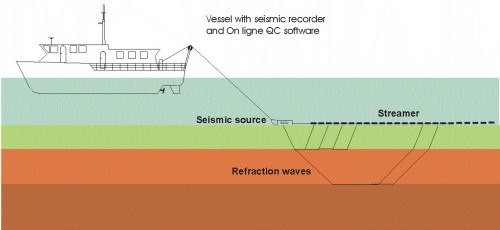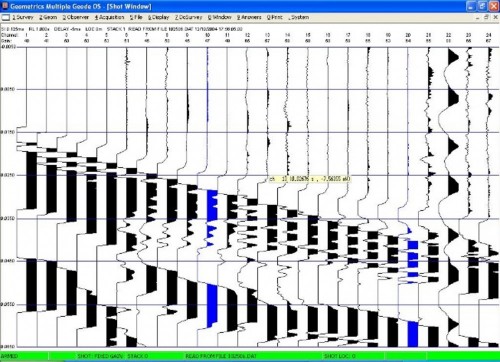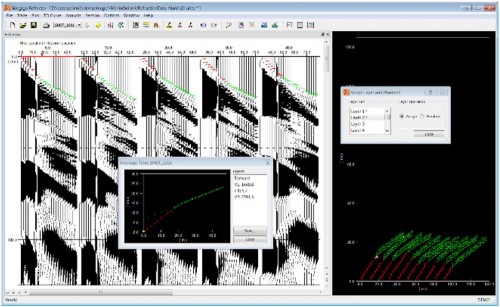Marine Seismic Refraction relies upon proper records and analysis of refraction waves. The waves generated by the seismic source (air-gun), travel in the sediment and are refracted by the different layers (Snell and Descartes laws).
A multichannel streamer is dragged onto the water bottom and records the refraction waves. Using the same equipment and the same record it is possible to combine refraction and marine surface wave processing (see UMASW section).
 Acquisition set-up for Marine Seismic refraction
Acquisition set-up for Marine Seismic refraction
Our software for on-line data QC visualizes the receivers and the seismic signal recorded. The picking of the first arrivals give access to the P wave velocities of the soil and the position of the different layers. In function of the streamer length used, the nominal penetration can reach 20-25 meters.
 On-line QC of the marine seismic refraction acquisition
On-line QC of the marine seismic refraction acquisition
 First arrival picked and “dromo” visualization
First arrival picked and “dromo” visualization